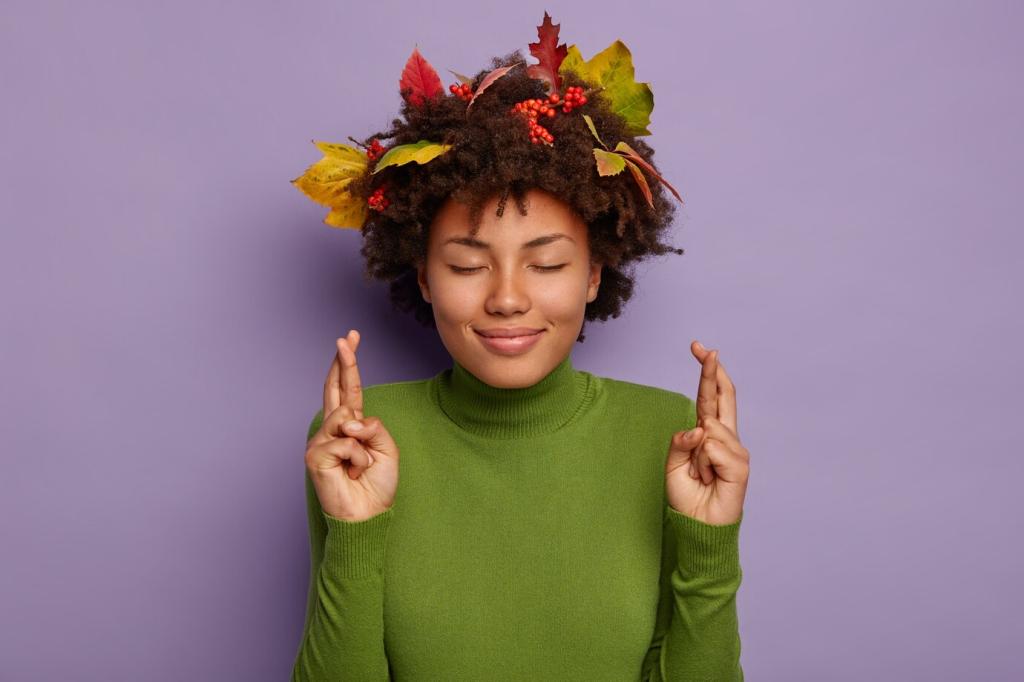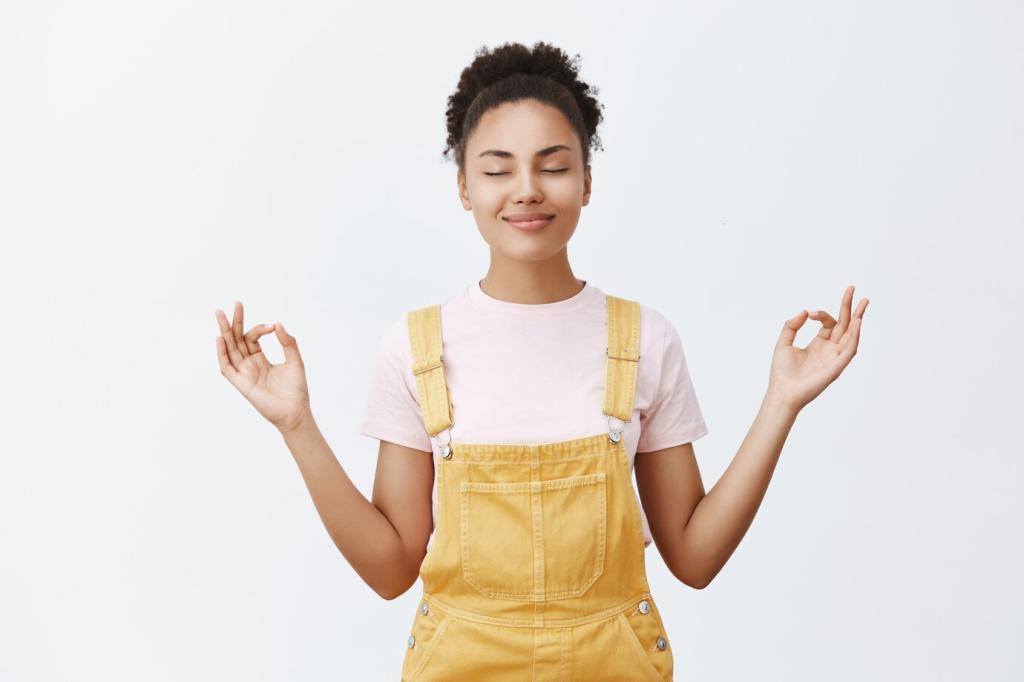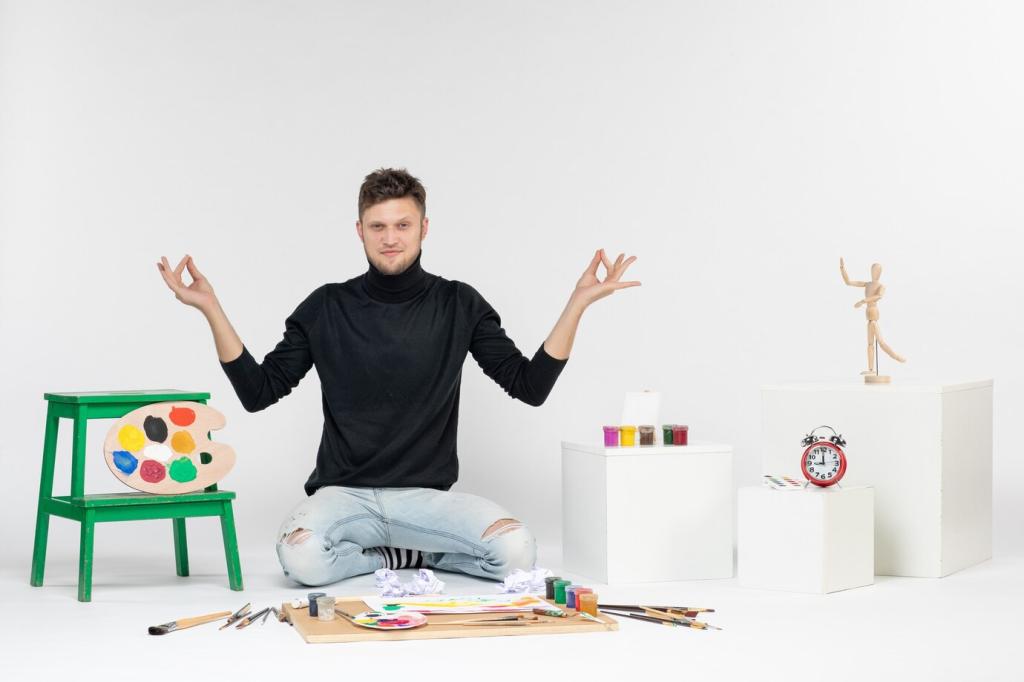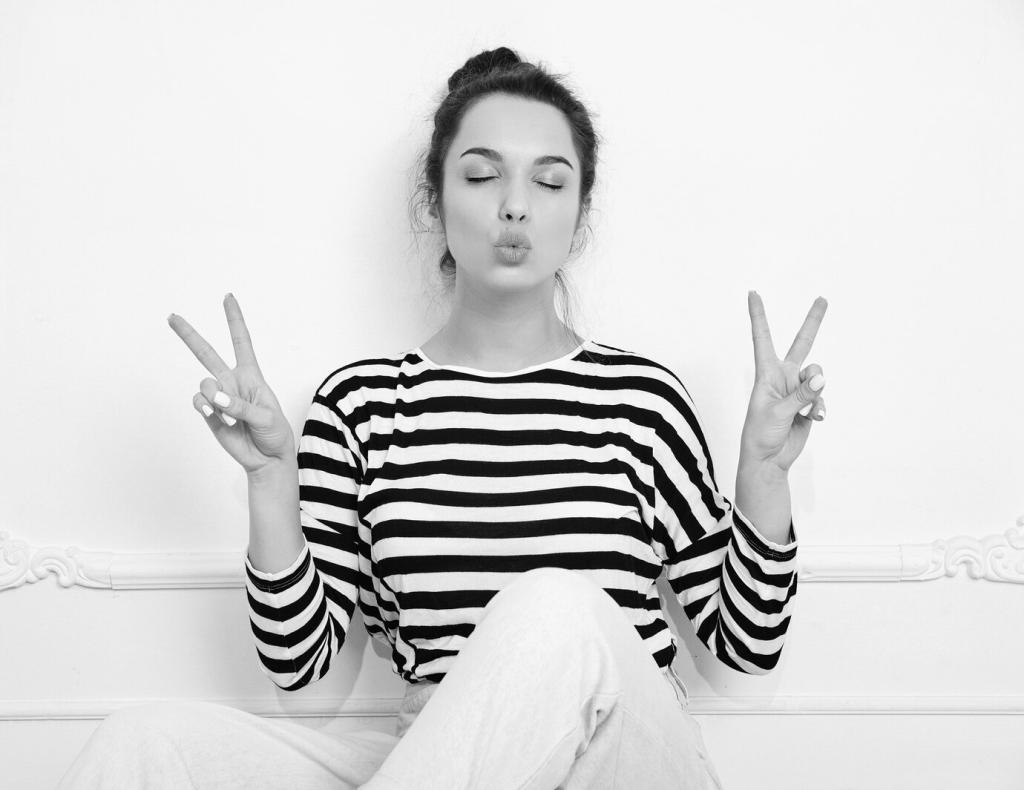Hands in Motion: Tactile Practices with Clay, Paper, and Texture
Roll a small clay sphere while breathing in four counts and out six. Notice warmth, weight, and slight fingerprints forming. Press your thumb gently to mark each exhale with a dimple. This creates a tactile diary of breaths you can hold when words feel distant.
Hands in Motion: Tactile Practices with Clay, Paper, and Texture
Tear, don’t cut, three papers representing morning, midday, and evening. Arrange by feeling, not logic. Glue while pausing between layers to inhale and exhale. The edges teach acceptance: nothing fits perfectly, yet everything belongs. Share a snapshot and the memory hidden in one torn edge.
Hands in Motion: Tactile Practices with Clay, Paper, and Texture
A reader stitched mindful lines on scrap fabric, then tugged a loose thread and unraveled a corner. Instead of frustration, she traced the path of the unraveling with slow breaths, stitching it back into a spiral. She wrote, “Repair is part of the rhythm.” What will you repair today?








